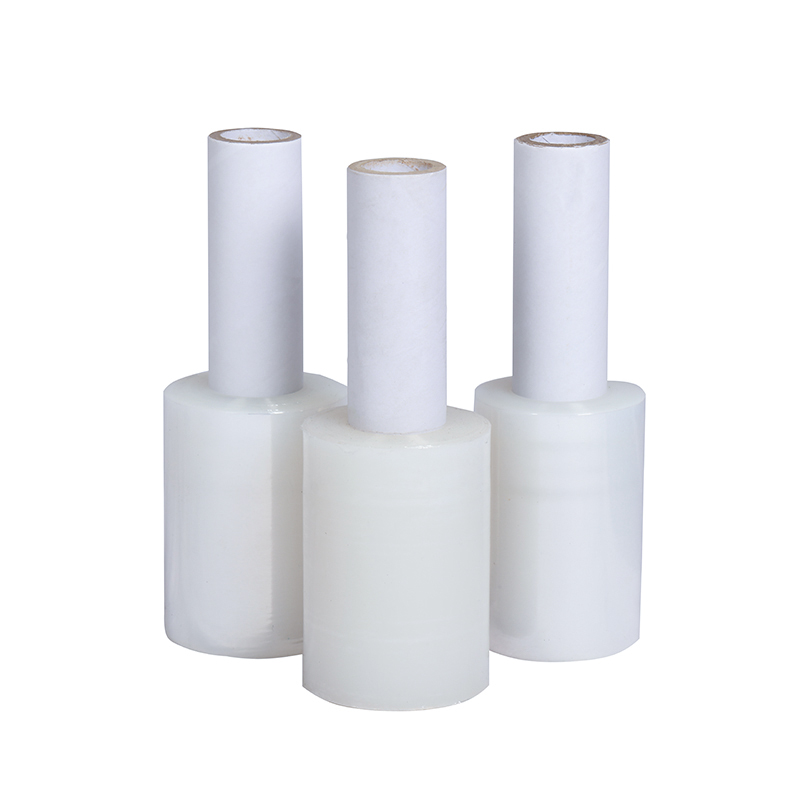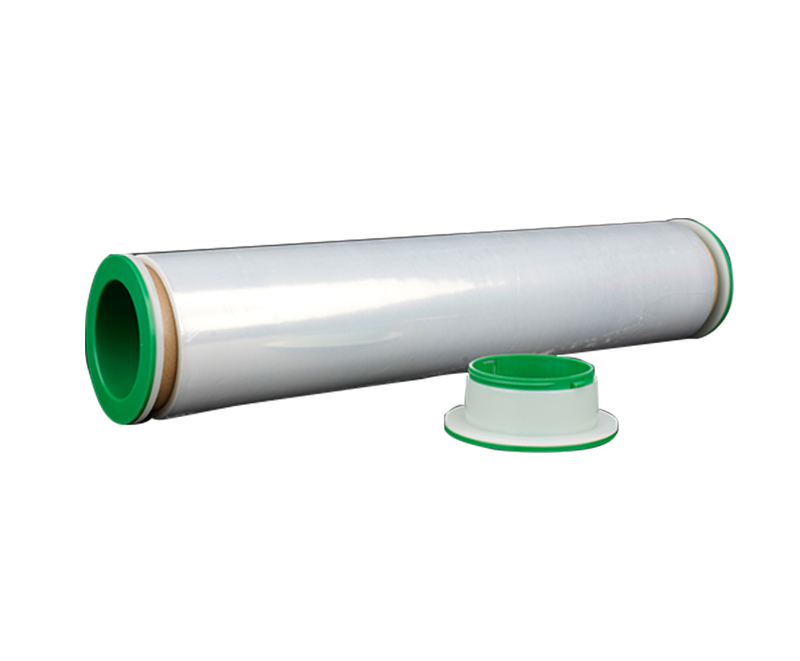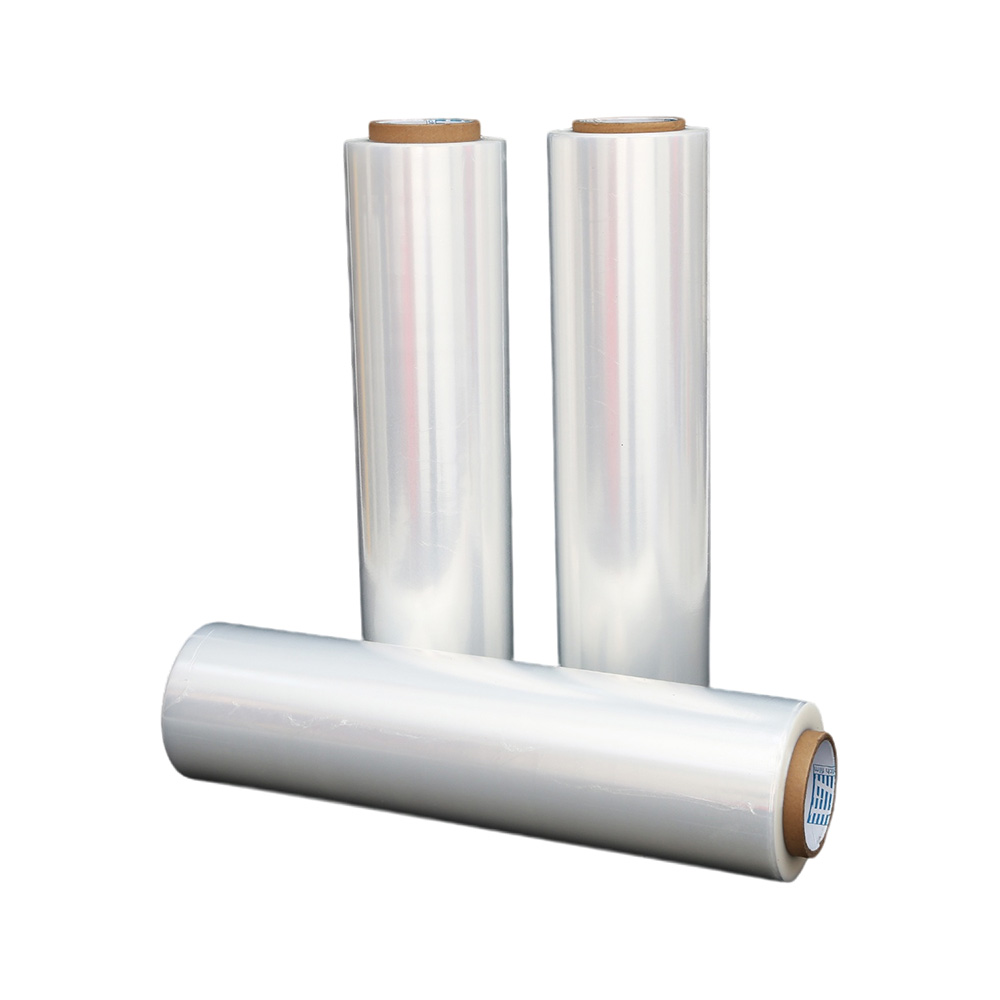How Does Stretch Film Microstructure Affect its Barrier Prop
Source:How Does Stretch Film Microstructure Affect its Barrier PropTime:2023-10-20Visitors:
Choosing the proper stretch film is a critical decision in perishable product packaging. The stretch film's microstructure often holds the key to maintaining the freshness, integrity, and overall quality of the products during transit and storage. This article will delve into the intricate relationship between stretch film microstructure and its impact on barrier properties.
Understanding Microstructure
Before we explore the connection between microstructure and barrier properties, let's start by defining what we mean by stretch film microstructure. In essence, stretch film's microstructure refers to its various layers' arrangement and composition. Understanding this is fundamental to selecting the proper stretch film for your perishable products.
Stretch film is typically composed of multiple layers, which are responsible for delivering specific properties crucial for packaging perishable items. A typical structure may include:
- The inner layer that comes into direct contact with the product.
- Intermediate layers.
- The outer layer is often exposed to the external environment.
These layers can be made from various materials, and their thickness can vary significantly.
Barrier Properties of Stretch Film
Barrier properties in packaging are the film's ability to protect the product from external factors, such as moisture, oxygen, and contaminants. In perishable product packaging, these properties are vital to ensure the products reach their destination in optimal condition.
Stretch film plays a crucial role in maintaining these barrier properties. It acts as a protective shield, guarding against the ingress of harmful elements that can compromise the quality of the perishable goods. But how does the microstructure of the stretch film come into play in this scenario?
The Relationship Between Microstructure and Barrier Properties
Now, let's delve into the core of the matter: how the microstructure of stretch film directly influences its barrier properties. This relationship is crucial for understanding how stretch film can protect your perishable products.
1. Thickness Matters
The thickness of each layer in the stretch film's microstructure plays a significant role in determining its barrier properties. Thicker layers often provide better protection against moisture and oxygen. This is particularly important when packaging perishable items like fruits, vegetables, and meats, which are highly sensitive to environmental conditions.
2. Material Composition
The choice of materials for each layer also impacts the barrier properties. Some materials offer better moisture resistance, while others excel in oxygen barrier capabilities. Understanding the specific needs of your perishable products is essential when selecting the proper stretch film.
3. Layer Bonding
The way layers are bonded together is another critical aspect of microstructure. Proper bonding ensures no gaps or weak points in the film. These gaps could allow unwanted elements to penetrate and affect the product.
4. Compatibility with Your Products
Different perishable products have varying requirements. For instance, delicate berries might need a different microstructure than robust vegetables. Your chosen stretch film should be compatible with the specific products you're packaging.
Types of Stretch Film Microstructures
You'll encounter different types of stretch film microstructures as you select the ideal stretch film for your perishable goods. Understanding these types is essential for making an informed choice:
- Mono-Layer Stretch Film: This single layer is suitable for basic packaging needs. It's often used for wholesale stretch film where cost-efficiency is a primary concern.
- Multi-Layer Stretch Film: Multi-layer films are versatile and can be customized to provide the necessary barrier properties. They are often used when packaging more delicate perishable items, such as seafood and fresh-cut produce.
By considering the microstructure of stretch film and the specific requirements of your perishable products, you can make a well-informed decision that ensures the freshness and quality of your goods throughout their journey from the stretch film factory to your customers.
Perishable Product Packaging Challenges
The importance of selecting the proper stretch film with the appropriate microstructure becomes especially evident when dealing with perishable products. These goods are often more susceptible to damage from external factors, making the choice of packaging material critical.
1. Temperature Sensitivity
Perishable items are susceptible to temperature changes. The wrong choice of stretch film can lead to temperature fluctuations within the packaging, potentially affecting the quality and safety of your products. Proper barrier properties, dictated by the microstructure, are vital to control temperature conditions effectively.
2. Moisture Control
Many perishable items are moisture-sensitive. Inadequate stretch film barrier properties can lead to moisture ingress, mold, spoilage, and loss of product quality. Microstructure plays a pivotal role in preventing moisture infiltration.
3. Oxygen and Contaminants
For many perishable products, oxygen, and contaminants are their worst enemies. Microstructure affects the ability of the stretch film to create a protective shield against these elements, preserving the freshness and flavor of the products.
4. Shelf Life
The microstructure of the stretch film directly impacts the shelf life of your perishable products. Proper barrier properties can extend the shelf life, reducing waste and ensuring product quality for prolonged periods.
Case Studies and Real-world Applications
To illustrate the real-world significance of understanding stretch film microstructure, we can look at some case studies and applications:
Case Study 1: Fresh Produce Supplier
A fresh produce supplier was experiencing a higher rate of product spoilage during transportation. By switching to a multi-layer stretch film with improved barrier properties, they significantly reduced product loss and enhanced customer satisfaction.
Case Study 2: Seafood Packaging
A seafood distributor upgraded their packaging to include stretch film designed explicitly for seafood preservation. This move extended the shelf life of their products and opened new market opportunities.
These case studies highlight how the right choice of stretch film microstructure can lead to substantial benefits in terms of product quality, customer satisfaction, and reduced waste.
In your quest for the ideal stretch film, consider the unique challenges of perishable product packaging and how the microstructure can address these issues effectively.
Selecting the Right Stretch Film for Your Needs
Selecting the appropriate stretch film for your perishable products is a crucial decision. To make an informed choice, consider the following factors:
1. Product Specifics: Understand the unique requirements of your perishable items. Delicate fruits and vegetables may require different barrier properties compared to bulkier goods.
2. Microstructure: Determine the ideal microstructure for your stretch film based on your product's needs. For products sensitive to moisture, consider films with enhanced moisture resistance.
3. Supplier Expertise: Partnering with the right stretch film supplier is essential. An experienced supplier can guide you in selecting the most suitable stretch film based on your requirements.
4. Wholesale Stretch Film: If you're dealing with large quantities of perishable products, consider the cost-efficiency of wholesale stretch film. It's a viable option for businesses focused on bulk packaging.
5. Sustainability: Keep in mind the growing demand for sustainable packaging. Many stretch film suppliers offer eco-friendly options, so inquire about sustainable choices that align with your business values.
6. Quality Control: Ensure the stretch film you choose undergoes rigorous quality control checks. This guarantees that the film consistently delivers the specified barrier properties.
Tips for Effective Application
Selecting the proper stretch film is only part of the equation. Proper application is equally critical to ensuring your perishable products are well-protected. Here are some tips for practical application:
- Tension Control: Proper tension during film application provides a secure and uniform wrap. This is essential for maintaining barrier properties.
- Layer Overlap: Ensure the layers of stretch film overlap sufficiently to create a tight seal. Inadequate overlap can lead to gaps and compromised barrier properties.
- Equipment Maintenance: Regularly calibrate stretch wrapping equipment to guarantee consistent film application.
- Training: Properly train your personnel in stretch film application techniques to avoid common mistakes undermining its effectiveness.
Conclusion
The microstructure of stretch film is a critical factor in preserving the quality and freshness of perishable products. As you consider your options, remember to consider the specific needs of your goods, the expertise of your stretch film supplier, and the importance of applying the film correctly.
From the stretch film factory to your products' final destination, understanding the interplay between microstructure and barrier properties will ensure that your perishable goods reach consumers in the best possible condition.
Recommended Products
Ranked in the same article
- how to use the stretch film technology to r
- How can we get detailed price list?
- Five common quality problems of PE protecti
- Plastic film degradation
- How to guarantee punctual shipment for our
- Gauge to Micron and Millimetre Conversion G
- What is the difference between stretch film
- Testing the permeability of stretch film
- Stretch film temperature requirements
- Electrical wire film VS electrostatic film
- Why insufficient transparency of stretch w
Latest news articles
- Factors That Affect the Stretching Function
- Exploring the Versatility of PE Stretch Fil
- What Is the Difference Between Shrink Wrap
- What is Stretch Film Used For?
- The Influence of Stretch Film Thickness on
- Testing the permeability of stretch film
- PE stretch film how to cut?
- The use of pe stretch film
- Stretch Film Wrap: Exploring Its Advantages
- PE vs PVC Stretch Film: A Comprehensive Gui
- What Is Red Stretch Film and What Are Its B



